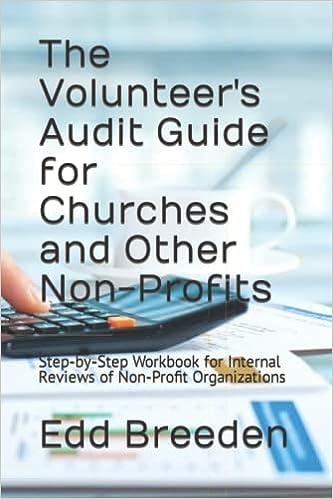The CFO at the Rubrics Corporation, a midsize hardware manufacturing firm, had become aware of the ongoing imbalance between the product's budgeted and actual costs. The Rubrics Corporation normally allocated overhead to products using a single direct cost driver, usually direct labor hours or direct labor dollars. This practice sometimes led to inaccuracies, since indirect costs were not incurred equally across products. For example, Rubrics' CFO had forecasted $10,000,000 in direct labor costs and $15,000,000 in overhead for a particular project last year, resulting in an overhead rate of 150 per cent. For each dollar of direct labor charged, $1.50 of overhead had been allocated. The shortcoming of this costing method was that overhead costs failed to reflect varying manufacturing intensity between products. Calculating ABC is more complicated than calculating traditional costing. Once management identifies the activity cost drivers, overhead rates are assigned per cost driver. The rates are estimated by dividing budgeted costs per driver by the anticipated resource requirements for each cost driver. For instance, rent could be allocated based on the square footage occupied by inventory in producing a given product or service. Say X Company estimates next year's rental costs to be $30,000 for its 15,000-square-foot factory. X Company can calculate the rental overhead rate by dividing $30,000 by 15,000 to get 2. After calculating the overhead rates for each activity driver (rent, depreciation, maintenance, etc), the rates are 9B10B011 Page 2 applied to the individual requirements of each product. Continuing the previous example, suppose X Company manufactures two products, Y and Z, requiring 10,000 and 5,000 square feet of factory space, respectively. X Company can calculate each product's individual use of factory rent by multiplying 10,000 and 5,000 by 2, resulting in $20,000 for Y and $10,000 for Z. The Rubrics Corporation made four products: widgets, gadgets, smidgets, and smadgets. Exhibit 1 summarizes the direct labor, overhead, and direct material costs associated with these products. Rubrics' CFO was considering implementing an activity-based costing system as a means of improving product pricing. Exhibit 2 presents the cost allocation bases for the three main overhead cost drivers (depreciation, set-up, and rent). Exhibit 3 shows the product resource requirements by cost driver. Notice, for example, that the set-up requirement for widgets is 200 hours. Among other things, the CFO wanted to compare the overhead estimates per product based on the traditional costing and ABC methods. In addition, the CFO wanted to understand, computer or calculate the following: 4. Assuming ABC allocated overhead more accurately, which products were incorrectly priced using the traditional costing method? What difficulties might result from incorrectly budgeted products? Hint: Think about how capital resources should be allocated to the most efficient opportunities. 5. What actions might be explored to deal with the mispriced products? 6. Compare assigned costs per product under both methods. Why had activity-based costing changed the total costs assigned to each product? 7. What were two circumstances where traditional and ABC costing would likely yield similar or equal overhead costs? The CFO at the Rubrics Corporation, a midsize hardware manufacturing firm, had become aware of the ongoing imbalance between the product's budgeted and actual costs. The Rubrics Corporation normally allocated overhead to products using a single direct cost driver, usually direct labor hours or direct labor dollars. This practice sometimes led to inaccuracies, since indirect costs were not incurred equally across products. For example, Rubrics' CFO had forecasted $10,000,000 in direct labor costs and $15,000,000 in overhead for a particular project last year, resulting in an overhead rate of 150 per cent. For each dollar of direct labor charged, $1.50 of overhead had been allocated. The shortcoming of this costing method was that overhead costs failed to reflect varying manufacturing intensity between products. Calculating ABC is more complicated than calculating traditional costing. Once management identifies the activity cost drivers, overhead rates are assigned per cost driver. The rates are estimated by dividing budgeted costs per driver by the anticipated resource requirements for each cost driver. For instance, rent could be allocated based on the square footage occupied by inventory in producing a given product or service. Say X Company estimates next year's rental costs to be $30,000 for its 15,000-square-foot factory. X Company can calculate the rental overhead rate by dividing $30,000 by 15,000 to get 2. After calculating the overhead rates for each activity driver (rent, depreciation, maintenance, etc), the rates are 9B10B011 Page 2 applied to the individual requirements of each product. Continuing the previous example, suppose X Company manufactures two products, Y and Z, requiring 10,000 and 5,000 square feet of factory space, respectively. X Company can calculate each product's individual use of factory rent by multiplying 10,000 and 5,000 by 2, resulting in $20,000 for Y and $10,000 for Z. The Rubrics Corporation made four products: widgets, gadgets, smidgets, and smadgets. Exhibit 1 summarizes the direct labor, overhead, and direct material costs associated with these products. Rubrics' CFO was considering implementing an activity-based costing system as a means of improving product pricing. Exhibit 2 presents the cost allocation bases for the three main overhead cost drivers (depreciation, set-up, and rent). Exhibit 3 shows the product resource requirements by cost driver. Notice, for example, that the set-up requirement for widgets is 200 hours. Among other things, the CFO wanted to compare the overhead estimates per product based on the traditional costing and ABC methods. In addition, the CFO wanted to understand, computer or calculate the following: 4. Assuming ABC allocated overhead more accurately, which products were incorrectly priced using the traditional costing method? What difficulties might result from incorrectly budgeted products? Hint: Think about how capital resources should be allocated to the most efficient opportunities. 5. What actions might be explored to deal with the mispriced products? 6. Compare assigned costs per product under both methods. Why had activity-based costing changed the total costs assigned to each product? 7. What were two circumstances where traditional and ABC costing would likely yield similar or equal overhead costs









